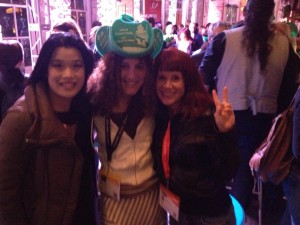Over the past year I’ve had the pleasure of getting to know Adam Benayoun and the Binpress team. Their mission to clarify the meaning and value of “free and open source” resonates well with what we were doing at WebFWD.
In Q1, I continued to support developers when I joined Mozilla’s Developer Relations group, and continue to support Binpress in its efforts to help open source developers build sustainable businesses.
The latest iteration of this support came this week, when the team asked me to participate in its first event, “Marketing to Developers.” Lest you think this sounds specious given the Developer DNA aversion to anything smelling of marketing (read Microserfs as classic reference point). While I thought I was novel in spontaneously describing many of our WebFWD startups as “D2D” in 2012, my friends at SFBeta industrialized the term earlier this year. The startup world is deciding that is ok to be explicit about something that has been happening for years: marketing and selling to developers. There’s even a D2D program in SF (and probably lots more popping up).
The team was able to attract 150 people to this event, along with some great speakers. Neeraj Gupta kicked things off with an overview of how Appcelerator has built their developer community over time. Next up was Kelly Shearon, who did a fantastic job sharing some basic tenets of marketing (e.g. if the product is bad, no amount of marketing lipstick will help; marketers must have empathy, etc.) – all shared with some fun edgy Github-esque slides.
Rounding out the evening (and hopefully a complement to Neeraj’s kickoff talk) was our panel featuring Amber Feng, Slava Akhmechet and Thomas Sarlandie. As the panelists represented Stripe, RethinkDB and Pebble respectively, my job as moderator was to tease out some of the good, the bad and the avoidables for building developer communities.
Some of the takeaways:
Interested in keeping the learning up? Join Binpress’ newly-formed “Marketing to Developers” meetup group where the slides will be posted and future events will happen.
Just in: Binpress’ recap of the event with decks and photos, and another recap from attendee Laura D’Ambrosio – great sanity checks!

